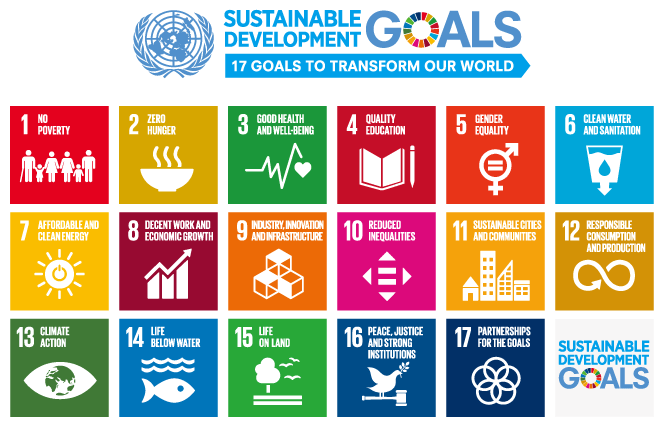Home
Welcome to the Sustainability Resource Guide for Penn State students! This guide provides a wide range of opportunities that students can get involved in or learn from in order to increase their understanding of and commitment to sustainability principles that are practiced at this university. Whether getting involved on campus, engaging with the greater community, or taking courses/curriculums to educate oneself, this guide provides the full extent of what is possible at Penn State when it comes to contributing to the 17 Sustainable Development Goals as determined by the United Nations.

Table of Contents
This resource guide provides readers with a breadth of opportunities and experiences for involvement in Penn State’s sustainability space. The contents to the resource guide are as follows:
Home Page
- Contents
- Audience
- Assumptions
- Organization
- Tips
- Author
Sustainability Resources
- Campus Involvement
- Community Engagement
- Education
Audience
This resource guide is directed at all undergraduate students at Penn State [University Park] who have extensive knowledge of sustainability initiatives on campus or are brand new to the sustainability space. Penn State is an incredibly large institution with many resources and opportunities, so the purpose of this resource guide is to consolidate these opportunities for even the most involved individuals on campus while simultaneously providing a foundation for incoming first years or new faces to this space to understand where they can best benefit from engaging with the guide. The goal of the guide is to bolster student experience and education while growing and strengthening the sustainability space with more manpower, support and interest.
Assumptions
This resource guide assumes that the reader is an undergraduate student at Penn State University on the University Park campus. The courses listed and opportunities presented are specific to undergraduate students who reside in the State College area provided that the majority of this work is central to the local community in an established campus. This generalization of students allows for a wide net to be cast to all those with potential interest in learning more about the greener side of University Park’s campus and community.
Organization
This resource guide has been divided into three main categories that readers can navigate between. The first page is “Campus Involvement,” which describes opportunities for students to join organizations, initiatives or programs that currently exist on campus and have a lot of established support behind them. Subpages of this tab include Penn State Sustainability, our institutional connection to sustainability, and the Student Farm, which offers internships and volunteer opportunities for students.
The second page is “Community Engagement,” which provides resources for learning about the local community around University Park and getting involved to help it flourish. The subpages of this tab include the Borough of State College with its own sustainability initiatives and metrics and Shaver’s Creek Environmental Center which hosts volunteering and off-campus programs that students can support.
The last page is “Education,” which lists some of the many resources that undergraduate students on campus can access to take courses in sustainability or simply learn more about it from a curricular point of view. The subpages of this tab include the university bulletin and the SAFES resource for agriculturally minded students.
Tips
Just like Penn State, this guide has a plethora of resources that readers can navigate through. Despite descriptive abstracts listed in each page with URL links that bring readers to the desired websites for more information, there are some tips to getting the most out of this resource as a first-time user of this guide. First, it would be beneficial to prioritize what type of involvement in the sustainability space would make the most sense for the specific reader. If the undergraduate student is in one of their last semesters, it may not make sense for them to start with the “Campus Involvement” page since they do not have as much time left to get involved. With just a few classes left to graduate, starting in the “Education” page could be a better use of the reader’s time when looking to get educated via specific classes and materials. Otherwise, it is recommended that readers click on the link before reading through the abstract of the resource so that they can have their own perception of the website as they read through the description and key points in the abstract. Happy exploring!
Author
This guide is written by Caden Vitti, a fourth-year Energy Engineering and Spanish student at Penn State University. For more information, contact his email at caden@psu.edu.
